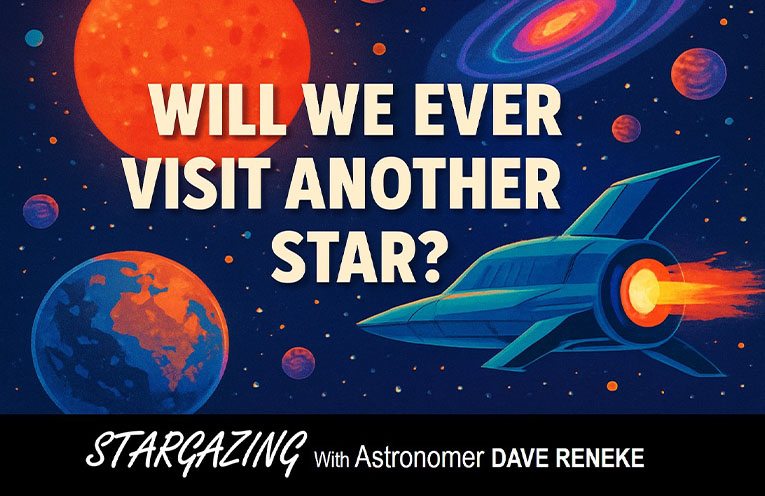EVERY night, the stars wink down at us like ancient storytellers, daring us to come closer.
They’ve been hanging there for billions of years, teasing us with the possibility that someone – or something – might be staring back.
The great cosmic question is simple yet maddening: will we ever actually visit another star?
The nearest one, Proxima Centauri, sits a mere four light-years away.
That sounds manageable until you realize a light-year is nearly ten trillion kilometers.
If Earth were shrunk to the size of a grain of sand, Proxima would still be the next beach over.
Our fastest spacecraft, Voyager 1, has been plodding along since the 1970s and hasn’t even crossed a single light-day yet. At its pace, you’d be looking at 70,000 years before knocking on Proxima’s door.
That’s a lot of sandwiches to pack.
And yet, the temptation is irresistible.
In 2016, astronomers discovered Proxima b, a rocky world orbiting right in the star’s “Goldilocks zone.”
Not too hot, not too cold – at least in theory.
Could it have oceans? Forests?
Or skies full of strange flying creatures we haven’t even imagined?
For all we know, someone there might be wondering if we exist.
The universe loves a good riddle, and this is one of its best.
Getting there is the tricky part.
Chemical rockets are out – they’re the Model T of space travel.
To cross interstellar space, we’d need the starship equivalent of a Ferrari: nuclear fusion drives, antimatter engines, or even giant laser beams pushing wafer-thin sails at a fraction of light speed.
The most ambitious idea so far, called Breakthrough Starshot, imagines sending tiny robotic probes to Proxima that would arrive in just a couple of decades.
They wouldn’t carry humans – more like robotic spies – but imagine the first close-up pictures of another star’s planet.
That alone would be the postcard of the millennium.
But the real prize would be a human journey.
Even at 10 percent the speed of light, it would take over 40 years to get there.
That’s an epic road trip – grandparents launching, grandchildren landing.
And that’s assuming you survive cosmic radiation, figure out how to eat without restocking Woolworths, and, importantly, remember how to stop when you get there.
Crashing through another solar system at 30,000 kilometres per second would be a very short visit indeed.
Still, history favours dreamers.
Once, the Moon was as unreachable as the stars.
Now astronauts look back at Earth from its surface in old photo albums.
Crossing oceans was once madness; today it’s a budget flight.
Maybe our descendants will see interstellar travel as just another commute, albeit one with better snacks.
Will we find life? That’s the shimmering promise.
Maybe it will be microbial slime under alien seas, or maybe – just maybe – something looking up at the same sky, wondering about us.
If two civilizations are staring across the void, perhaps one day we’ll wave across the darkness and finally meet our cosmic neighbours.
Until then, the stars remain both distant and tantalizingly close—like a door we know we’ll open eventually.
The question isn’t whether we’ll visit another star.
It’s when we finally get the nerve – and the technology – to knock.
The stars are far, yes – but they are not unreachable forever.
For a species that has already left footprints on another world, the road ahead is not a matter of “if,” only “when.”
By Dave RENEKE



